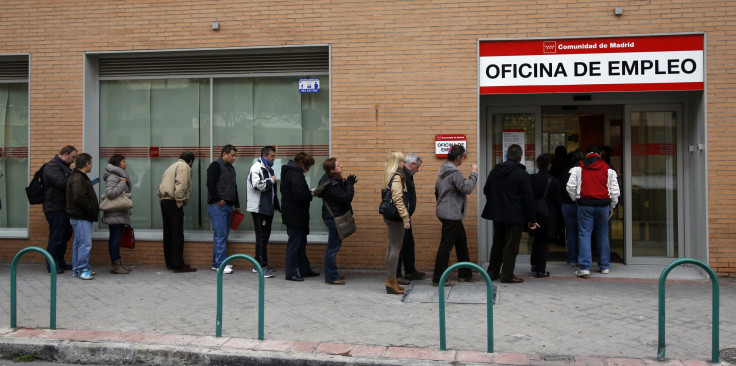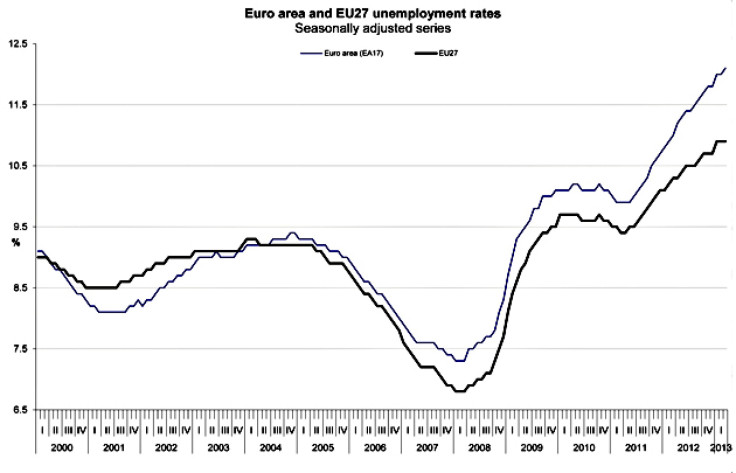March 2013 European Unemployment: 4.7% In Austria, 27.2% in Greece, 26.5 Million People Sit Idle


It just keeps getting worse.
The 17 nations of the euro zone saw another rise in joblessness. In March, it rose to a seasonally adjusted rate of 12.1 percent, up from 12 percent in February and 11 percent from March 2012. The rate for the 27 nations of the European Union held steady from the previous month at 10.9 percent, but it was up from 10.3 percent in the same period last year.
Compared with last year, 1.8 million more working-age Europeans are unemployed, according to Eurostat. This means 26.5 million working-age Europeans are idle, including 19.2 million in the euro zone.
The worst-hit nations are the usual suspects, the ones that have been hit hardest by the sovereign debt crisis that has sent the entire region into its most protracted recession on record. They are:
Greece at 27.2 percent;
Spain at 26.7 percent; and
Portugal at 17.5 percent.
The lowest jobless rates in March were:
Austria at 4.7 percent;
Germany at 5.4 percent; and
Luxembourg at 5.7 percent.
Unemployment rose in 19 EU member states and fell in eight of them, though most of those declines still left countries -- including Estonia, Latvia and Ireland -- with double-digit jobless numbers.
The number of Europeans under the age of 25 who have no jobs stands at 23.5 percent for the EU and 24 percent for the euro zone. The worst-hit countries for youth unemployment are:
Greece at 59.1 percent;
Spain at 55.9 percent; and
Italy at 38.4 percent.
(Read the full report here in pdf format.)
© Copyright IBTimes 2024. All rights reserved.












